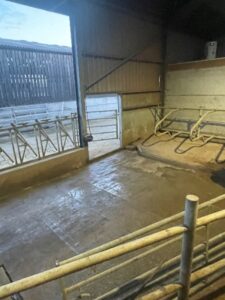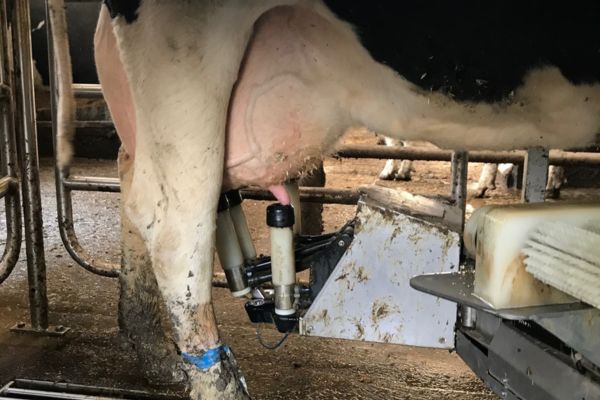MMN March 2024 – Are Robots for Me?
14 March 2024With the ongoing problem of finding good reliable labour, dairy farmers are increasingly asking themselves: Should I be looking at robots to milk my herd? In the following article I will aim to give some advice on what to consider and avoid some of the pitfalls associated with them.
Labour saving?
If you have a pre-conceived idea of using robots to milk your herd so you can walk away from the cows, you had better keep your money in your pocket! Don’t get me wrong, robots will ‘harvest’ milk from the cow and do a very good job of it, but the cows still need daily attention. The twice (or thrice) daily contact with the cows through the parlour will be lost so you will have to rely on data generated by the robot to make informed decisions on udder health, bulling activity, feeding management etc. There are some labour savings but there will also be a change in labour structure to more of a management style, meaning you will have more time to look after foot health, fertility etc.
Robots will be running for 24 hours/day, 365 days a year so it is inevitable they will break down at some point and not necessarily during the working day, so expect the odd twilight hours alarm call! Ideally you need at least two people to share alarm calls so that there is cover for holidays, nights out etc.
Type of herd
Herds kept indoors on an all-year-round calving pattern are more suited to robots although the availability of grazing gates along with good grassland management means cows can be grazed successfully on a robotic system. The optimum level of performance is not necessarily cows/robot but litres/robot, although the target will vary depending on breed and if you decide to graze the herd or not. Targets of 2000 litres/robot/day are often quoted.
Changing to a robotic milking system will no doubt increase milk yield, with a change in milking frequency, but KPI’s such as pregnancy rate and age at first calving will still need focussing on to maintain efficiencies within the herd. Poor mobility within a dairy herd will mean reduced robot visits so this is another area that needs managing correctly. Due to individual quarter milking, over milking and the risk of teat end damage is virtually eliminated which can mean less mastitis. Also, somatic cell counts often tend to be lower.
Building design
If the decision to go down the robotic route has been taken, building layout is the next step to consider. Think how you are going to handle breeding cows, sick cows, routine fertility visits by your vet and TB testing. Once cows are settled into a robotic milking environment, they don’t like being herded, so TB testing ideally needs to be done in the same building using self-locking yokes for instance.
In an ideal world there should be a small pen located on the exit of the robot, with a few cubicles and access to feed (see photo) so cows can be automatically drafted for breeding, vet visits or just checking the animal over if the robot has detected any abnormalities in the milking data. It is far easier and hence more likely to get done if the cows are readily accessible rather than chasing them around the shed when you have to AI them!

The other decision with regards to building design is between free-access and guided entry. Different manufacturers will advise you differently, but generally free access allows cows to express themselves naturally and do what they want and is the most common system in the UK. Guided comes in two variations: milk first or feed first. Milk first is probably the second most common system and means cows must visit the robot, which decides if they need to be milked, before they can access the feed fence. Feed first is a reversal of milk first whereby the cow can only access the resting area, from the feed fence via the robot. Studies have revealed that milking frequency is greater in early lactation with free access systems and higher in late lactation for guided traffic. Generally, guided traffic systems can also be more efficient in terms of feed as there is less risk of over feeding late lactation cows and also means that there are less ‘fetch cows’ to deal with.
Which make?
This comes down to a farmer’s individual preference but one of the key considerations to this is dealer back-up. Engineers that are not local and don’t carry the required parts can be frustrating when your cows aren’t getting milked!
In conclusion, there are many very successful robotic systems out there that perform well, producing large amounts of milk and that is down to understanding the principles of robotics and excellent attention to detail in management. It is about making sure a robotic milking system is right for you, your cows and having the mindset to make it a success.
david.darlington@sac.co.uk, 01539 769059
Sign up to the FAS newsletter
Receive updates on news, events and publications from Scotland’s Farm Advisory Service

